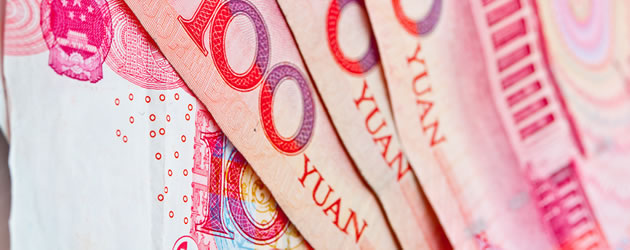The Pound Sterling to Euro (GBP/EUR) exchange rate climbed on Tuesday while the Pound Sterling to Russian Ruble (GBP/RUB) and Pound Sterling to Chinese Yuan (GBP/CNY) exchange rates fell ahead of UK inflation data.
The Pound Sterling to Euro (GBP/EUR) exchange rate began Monday’s European session trading within a narrow range, while the Pound Sterling to Russian Ruble (GBP/RUB) exchange rate slipped dramatically and Pound Sterling to Chinese Yuan (GBP/CNY) exchange rate softened slightly.
Monday is an extremely quiet day for data, lending a lot of movement in the GBP/EUR, GBP/RUB and GBP/CNY currency pairs to global developments.
Russian Ruble (RUB) Exchange Rate Forecast: GBP/RUB Falls to 76.00, EUR/RUB 55.43
The Russian Ruble to Pound Sterling (RUB/GBP) exchange rate managed to climb by over 2.0% on Monday, on account of increasing oil prices. The Russian Ruble to US Dollar (RUB/USD) exchange rate registered its largest weekly gain last week on account of a ceasefire in Ukraine as well as an improvement in crude helping to bolster confidence.
However, the advance was trimmed when the Bank of Russia announced that commencing Monday April 13th, it would be increasing its minimum interest rate on any foreign currency repurchase agreements.
Promsvyazbank analyst Alexei Egorov stated: ‘This was a very logical move by the central bank. The demand for the foreign currency at repo auctions was very strong as investors were using it to carry trade. The fact that the foreign-currency liquidity will be squeezed has impacted the Ruble but I don’t see this as a start of a correction’
However, many traders are suggesting the Reserve Bank of Russia may be inclined to cut interest rates again in the next three months after already making two downward adjustments this year.
A weaker Ruble, combined with hefty sanctions imposed over the situation between Russia and Ukraine, has seen Russian imports tumble dramatically. Russia’s first quarter imports fell by a massive 35.6% on the year; 2015’s Q1 imports reached only $37.9B rather than the $59.1 in 2014.
The Ruble’s improvement has seen it transform from the worst performing currency to the best in the worldwide market with a 17% rally this year versus the US Dollar (RUB/USD).
Chinese Slowdown Forces Chinese Yuan (CNY) Exchange Rate under Pressure
Another nation showing signs of a slowdown is one of the world’s largest economies – China. Weaker-than-forecast Chinese data pressured the Australian Dollar (AUD) and New Zealand Dollar (NZD) exchange rates lower as the Oceanic regions have strong trade links with China.
The Chinese trade balance shocked many economists when it came in at only $3.08B in March rather than the $40.20B forecast, after February’s $60.62B.
Chinese exports contracted by a massive 15% in March on the year after February’s figure shot up by a massive 48.3%. Meanwhile, imports also took a nasty 12.7% tumble following February’s -20.5% decline.
China has been under investor scrutiny over the past six months or so anyway as experts watch recent figures in an attempt to determine whether or not the economy is in fact undergoing a much speculated about slowdown.
Market expert Michael Hewson stated: ‘These data misses raise concerns that not only is the Chinese economy failing to rebalance with demand remaining low, but also the global economy’s demand for Chinese exports is also falling back raising concerns about the state of the global recovery as well.’
A global slowdown in economies such as China, Russia and the Eurozone have been the forefront of many investors concerns in recent months as the prospect of prolonged global deflation and weak growth could see the worldwide economy stagnate for a substantial amount of time. Furthermore, a weak global outlook could leave economies increasingly vulnerable to shocks.
Investor sentiment in upcoming Chinese Gross Domestic Product (GDP) data later in the week is now wavering substantially.
Hewson continued: ‘A bigger than expected slide in both March exports and imports have raised concerns about the prospects of the Chinese economy hitting its 7% GDP target later this week. If industrial production and retail sales [due Wednesday] also disappoint, which seems a distinct possibility now, we can expect that any disappointment in this week’s Q1 GDP number to translate into a rising expectation of further easing measures.’
Pound Sterling to Euro (GBP/EUR) Exchange Rate Forecast – Currently Trending at 1.38
Meanwhile, the Pound Sterling to Euro (GBP/EUR) exchange rate is trending higher as negotiations between Greece and its creditors get underway in both Brussels and Athens today. Investor sentiment in the Euro has been fluctuating in response to developments between Greece and its creditors as the nation attempts to renegotiate its austerity package.
Last week saw Eurogroup heads offer Greece six days in which to propose a new reform plan—an event that may give talks the kick they need to make some substantial progress.
Tuesday will see the release of the highly influential UK Consumer Price Index (CPI) which could see the Pound Sterling exchange rate swing dramatically if any weak levels of inflation are announced. Eurozone Industrial Production ecostats are also scheduled to emerge.
The Pound Sterling to Chinese Yuan (GBP/CNY) exchange rate is reaching 9.0741. The Pound Sterling to Russian Ruble (GBP/RUB) exchange rate is trading at 76.6200. The Pound Sterling to Euro (GBP/EUR) exchange rate is trending in the region of 1.3831.



